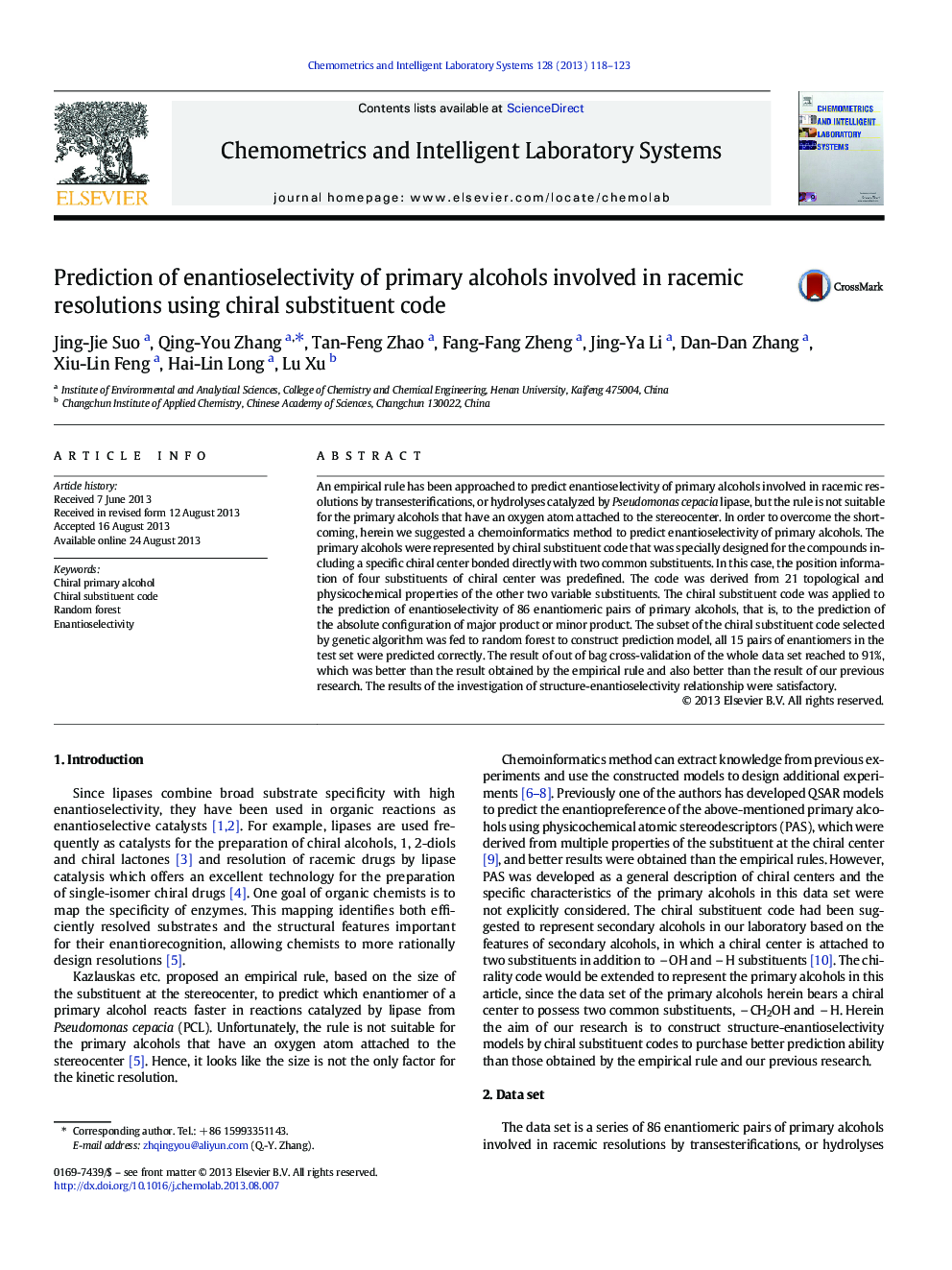| کد مقاله | کد نشریه | سال انتشار | مقاله انگلیسی | نسخه تمام متن |
|---|---|---|---|---|
| 1181020 | 1491550 | 2013 | 6 صفحه PDF | دانلود رایگان |

• Only the chiral center directly bonded to substituent -CH2OH was investigated.
• Chiral substituent code was extended to represent chiral primary alcohols.
• A chemoinformatics approach was successfully used to predict enantioselectivity.
An empirical rule has been approached to predict enantioselectivity of primary alcohols involved in racemic resolutions by transesterifications, or hydrolyses catalyzed by Pseudomonas cepacia lipase, but the rule is not suitable for the primary alcohols that have an oxygen atom attached to the stereocenter. In order to overcome the shortcoming, herein we suggested a chemoinformatics method to predict enantioselectivity of primary alcohols. The primary alcohols were represented by chiral substituent code that was specially designed for the compounds including a specific chiral center bonded directly with two common substituents. In this case, the position information of four substituents of chiral center was predefined. The code was derived from 21 topological and physicochemical properties of the other two variable substituents. The chiral substituent code was applied to the prediction of enantioselectivity of 86 enantiomeric pairs of primary alcohols, that is, to the prediction of the absolute configuration of major product or minor product. The subset of the chiral substituent code selected by genetic algorithm was fed to random forest to construct prediction model, all 15 pairs of enantiomers in the test set were predicted correctly. The result of out of bag cross-validation of the whole data set reached to 91%, which was better than the result obtained by the empirical rule and also better than the result of our previous research. The results of the investigation of structure-enantioselectivity relationship were satisfactory.
Journal: Chemometrics and Intelligent Laboratory Systems - Volume 128, 15 October 2013, Pages 118–123